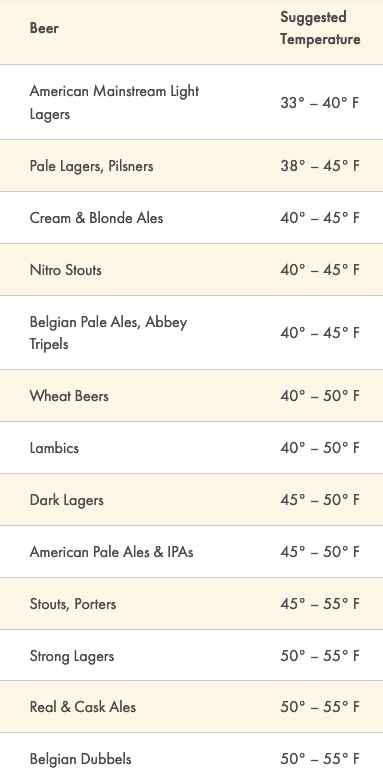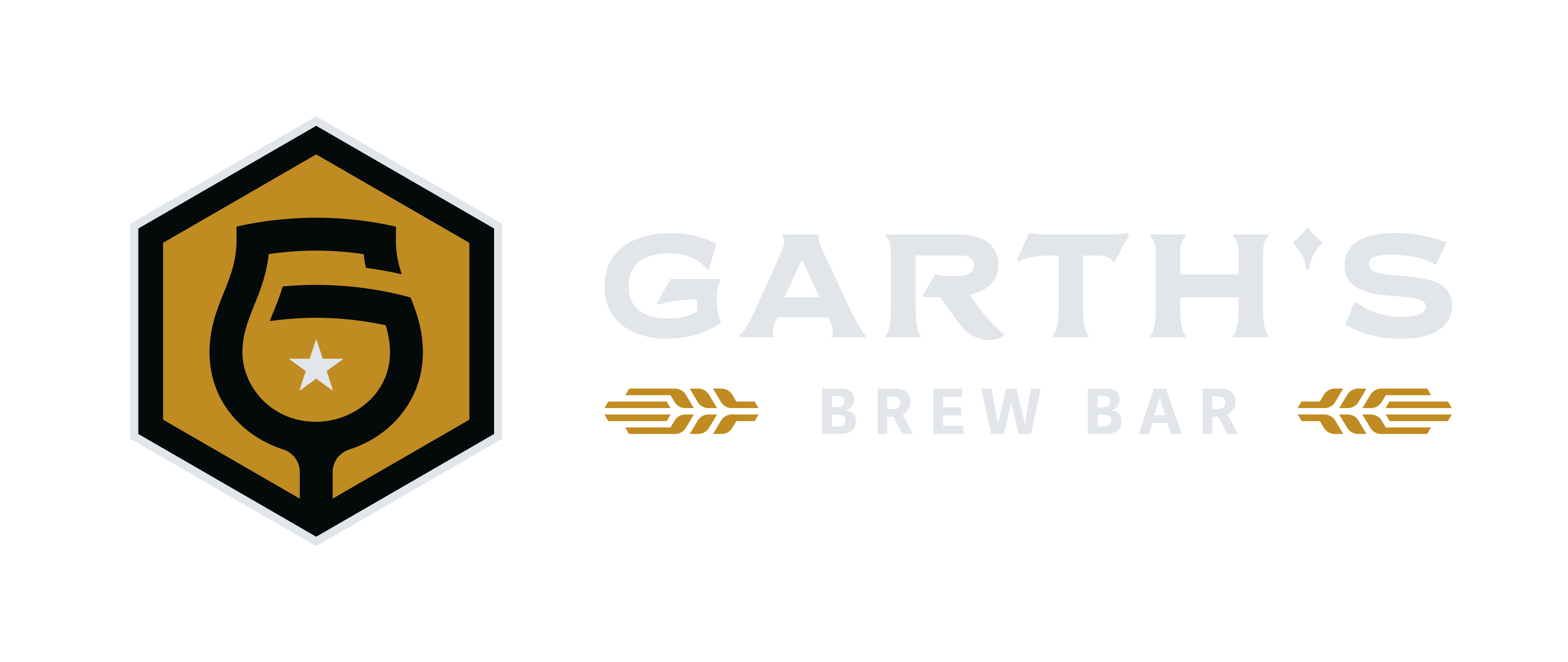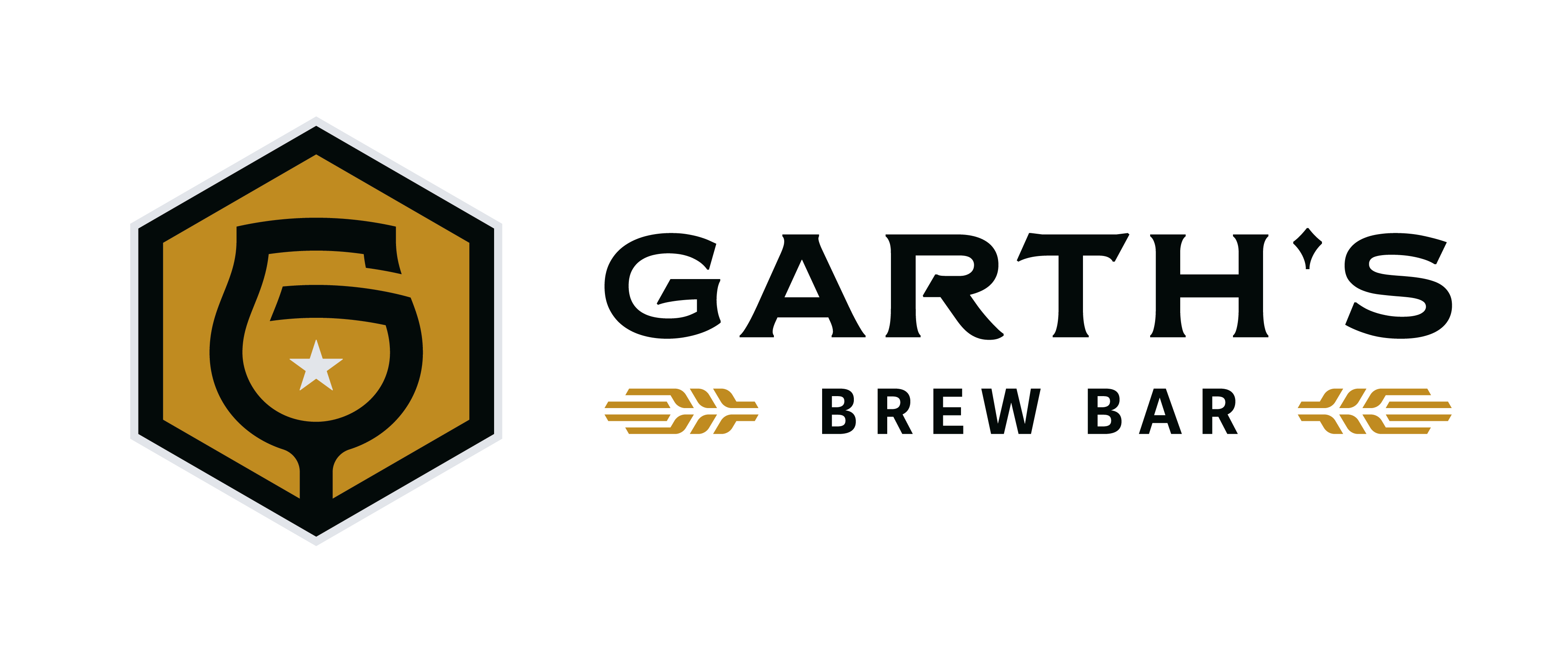As the weather heats up, you may be encouraged to put your favorite beer on ice, but word to the wise: Craft beer is sometimes better warm. Or, rather, warm-er.
We encourage you to fight the urge to pour your craft beer into a frozen pint or stick your cans in the freezer for a fast cool and, instead, be more mindful about the style of beer in your hand.
The biggest reason why?
You deserve to enjoy every craft beer at its peak flavor profile.
Ice to Meet You: Cold Beer Is Not Necessarily Better
American beer coolers are generally kept at around 38 degrees Fahrenheit, but this is not necessarily optimal drinking temperature for every beer. So why are they kept that way? The simple answer is freshness.
A colder temperature in the beer cooler means beer bars and restaurants can stabilize their inventory over time. It also helps maintain product consistency and operator’s efficiency – all good things to ensure your favorite craft beer bar succeeds.
A more complex answer involves advertising. What could be better than an ice cold, refreshing brew after a long day?
Macro-breweries have latched onto this messaging, andcertainly with great success. Commercials abound with images of snowy whitecaps and frosty steins. Coors went so far as to invent a can that turns blue when the beer is ice cold. A helpful visual aid to ensure maximum cool. In the macro-beer world, cold is king.
Craft brewers and homebrewers alike, however, will argue there is such a thing as “too cold.”
The Homebrewers Association hasa detailed chart for best beer drinking temperature, depending on the style, and it ranges from 33 degrees to 55 degrees.
Not to be too beer-snobby: There is nothing wrong with a frigid brew on a hot day. But serving a craft beer “as cold as possible” won’t do that beer or the brewery who made it any justice. There’s that, and you’ll miss out on complex flavors and aromas.

Hot Enough For Ya? How Warm Is Too Warm?
The ideal serving temperatures for craft beer varies wildly by style as noted in the chart. Mainstream American lagers are best served at near-freezing, between 33 and 40 degrees Fahrenheit. Pale lagers and blonde ales follow closely, between 38 and 45 degrees. Stouts, porters, dark lagers and cask ales are styles that improve when served closer to 50 degrees Fahrenheit.
Pro tip: As the beer darkens, the warmer temp it should be enjoyed at.
Like with most craft brewing, it all comes back to chemistry. Atoms move slower when it’s cold. A frigid, frozen pint glass will slow volatilization of aromatic compounds, leading to a thin and tasteless beer. Cold can also enhance bitterness and dryness, and make a clear beer appear cloudy. A frozen pint glass doesn’t just negatively affect the beer. The freezing brew can overstimulate your palate, preventing you from fully experiencing a well-made craft beer.
On the other side, a beer left too long in the sun will flatten, and hop compounds will break down, leaving your beer smelling skunky. At much warmer temperatures your beer may even begin to taste like wet cardboard.
(This is why heavily-hopped IPAs are better if drunk on the cooler side and more quickly.)
We still suggest storing your beers in a refrigerator or at least a dark basement room where the temperature remains consistently cool. If you’re drinking outside, make sure to prioritize keeping your beer in the shade.
When it comes to crushing a macro lager, which generally lacks complexity, colder may be better. “If I’m drinking a [Miller] High Life, I want it to be cold because I don’t want to taste it,” Gary Valentine, a beer consultant and educator, oncetold the Chicago Tribune.
But drinking a dark, bubbly, fruity weizenbock at a cold temperature will mask flavors. It will taste like a “beer,” sure. But it may not taste like a craft beer and you’ll be left missing out on a better craft beer experience had you let it warm up just a bit.
Let’s Get Physical: Use Body Heat To Warm Your Brew
Some craft beer geeks take temperature control quite seriously. Ray Daniels, who founded the Cicerone beer education program, said he used to put beer in the microwave. “Ten seconds takes the frosty edge off,” hetold the Chicago Tribune.
This may be a step too far for casual craft brew drinkers. (Daniels later admitted he no longer does this.)
There are other, easier methods to warm your craft beer. The simplest way is to use your natural body heat. This is one of the many reasons the best craft beer bars near you serve every beer in a clean, rinsed tulip glass. The bulb of the glass is perfect for your hands to wrap around.
Hug the glass in your hands for a few seconds – No microwave needed!
No matter how you do it – microwave, hands or a poker – there’s no need for beer snobbery. Enjoying a chilly pilsner after mowing your lawn on a hot summer day? That’s the good stuff. But it’s worth taking into consideration, especially if you’re pairing beer with food or enjoying a craft beer fresh in a taproom the way to get the most out of your flavor experience
The Best Of Both Worlds: One Last Consideration To Get The Most Out Of Your Beer Experience
While there are optimal drinking temperatures for each craft beer, it’s worth experiencing the beer throughout its temperature journey. Each degree of difference may present a new flavor, aroma or complexity that you weren’t quite expecting. The journey here is as important as landing on the “perfect” temp.
While beertenders at Garth’s Brew Bar don’t have cans or bottles that change colors, we will always give advice on how to best enjoy your brew – that’s our hot take.
Edit 5/30/22: This article about beer going from cold to warm to cold again is worth reading.

